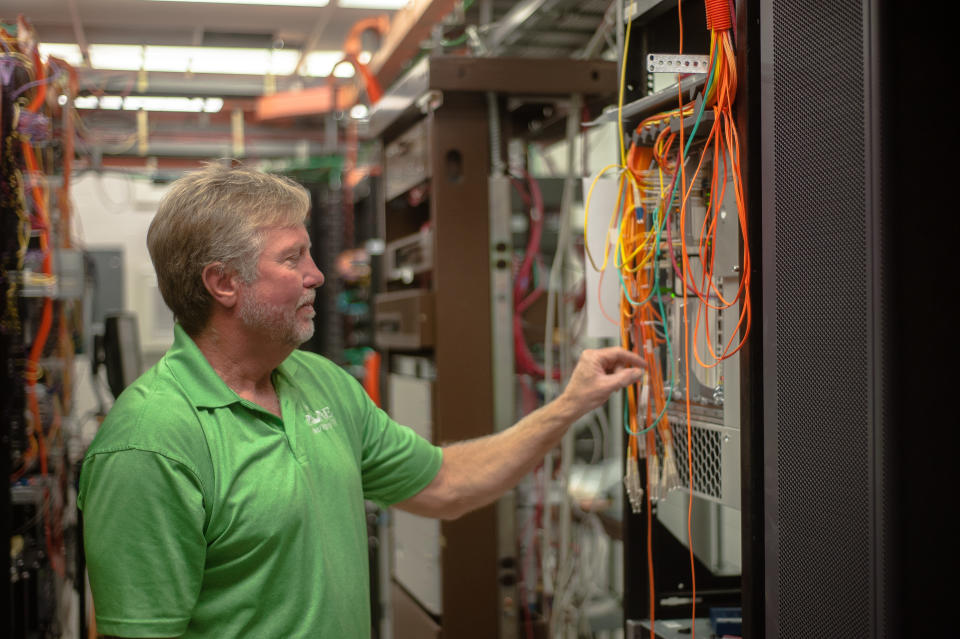FCC's plan to ban Huawei, ZTE could cost rural carriers over $1 billion

The Federal Communications Commission has moved one step closer to removing Huawei and ZTE, two Chinese telecom companies, from wireless networks in the U.S., and some rural wireless companies worry about the cost and who will pay for the change.
The federal agency voted to ban carriers from using federal funds to purchase equipment from Huawei and ZTE on Friday, citing national security concerns. The FCC also passed a plan to assess how much equipment from Huawei and ZTE are currently in the networks and to seek public comments on the “rip and replace” policy that will remove existing Huawei and ZTE equipment from the networks completely.
It won’t be easy or cheap for rural carriers, which bought their equipment through a bidding process years ago. Rural Wireless Association, which represents carriers with fewer than 100,000 users, estimates equipment replacement could cost their members about $1.2 billion. The FCC estimates the cost ranges from $1 billion to $2 billion, depending on how much equipment needs to be replaced.
If the “rip and replace” policy is passed by the FCC, rural carriers have to turn to other equipment makers like Nokia and Ericsson. Huawei and ZTE equipment, once approved by the FCC, has increasingly become seen as a security risk as lawmakers worry their equipment could be backdoors for the Chinese government.
“The way the FCC conducted the auction is that money went to the cheapest bidders who served the most. That's when Huawei and ZTE entered the game,” said Carri Bennet, general counsel at Rural Wireless Association. “When they won the auction to win this money the FCC knew what equipment they were using and approved it.”
‘A process that takes years’
FCC Chairman Ajit Pai said Huawei and ZTE equipment poses an “unacceptable risk to U.S. national security” and he has vowed to provide financial assistance to these carriers to help them transition to “more trusted vendors” in an October blog post.
The funding for rural carriers to replace Huawei and ZTE equipment will likely come from two pending bills in Congress on financing the replacement of 3G and 4G equipment. One bill in the Senate calls for $700 million, while the one in the U.S. House of Representatives asks for $1 billion.
The cost will not only cover purchase for higher-priced equipment, but also software expenses. Besides selling hardware, telecom vendors usually build recurring revenue on software updates and maintenance contracts that could last for a few years.
Bennet warns that some of its members could go out of business if the funding falls short.
“To completely overhaul a network and replace it with another network, you have to build the new network first. And you have to migrate everything over. So it's a process that takes years,” said Bennet.
In an emailed statement, Huawei called FCC’s order “unlawful” and warns about its impact on the rural communities.
“Many carriers rely on Huawei for its high-quality, market-leading, and cost-effective equipment and services. Without access to those solutions, these carriers will lose their ability to provide reliable and high-speed telecommunications and internet services,” a Huawei spokesperson said.
The increasing national security risk of telecom equipment made by Chinese companies is against the backdrop of the year-long China-U.S. trade talks. President Trump claimed both sides are “very close” to a deal, despite the delay for a much-anticipated signing ceremony for a “phase one” deal.
While the FCC has the ability to take companies on and off the targeted list, Bennet said its carrier members no longer think progress in trade talks will reverse the agency’s decision.
“What the FCC did is probably the clearest indication to them [carriers] that this is over,” said Bennet. “If It's three or four years down the road and we've already ripped the equipment out, chances are we are not going to go back to use Huawei or ZTE.”
Krystal Hu covers tech and China for Yahoo Finance. Follow her on Twitter. Read more:

 Yahoo Finance
Yahoo Finance 
